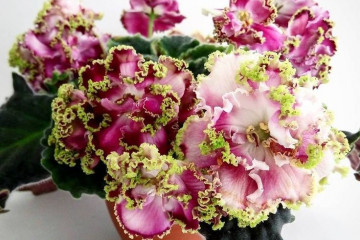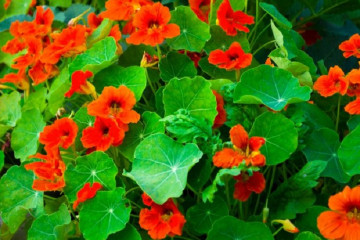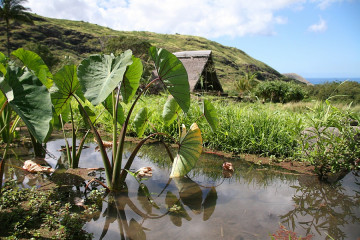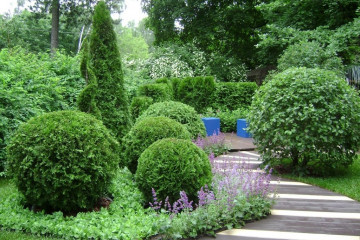Nasturtium flower - classification of perennial varieties
Content:
- What does a curly nasturtium flower look like?
- Classification of popular types of nasturtium
- The cultivars that are most popular with horticulturists
- Planting in pots, flowerpots and pots
- Features of care in the garden and on the balcony
- When and how it blooms
- Possible growing problems
- Use in landscape design
Nasturtium is a flower that can be found in every garden. The herbaceous plant is very popular, especially as an additional decoration for flower beds. It is grown not only in the open field, but also on balconies, hanging flower beds. The culture is undemanding to care for, and pleases with its bright colors throughout the summer.
What does a curly nasturtium flower look like?
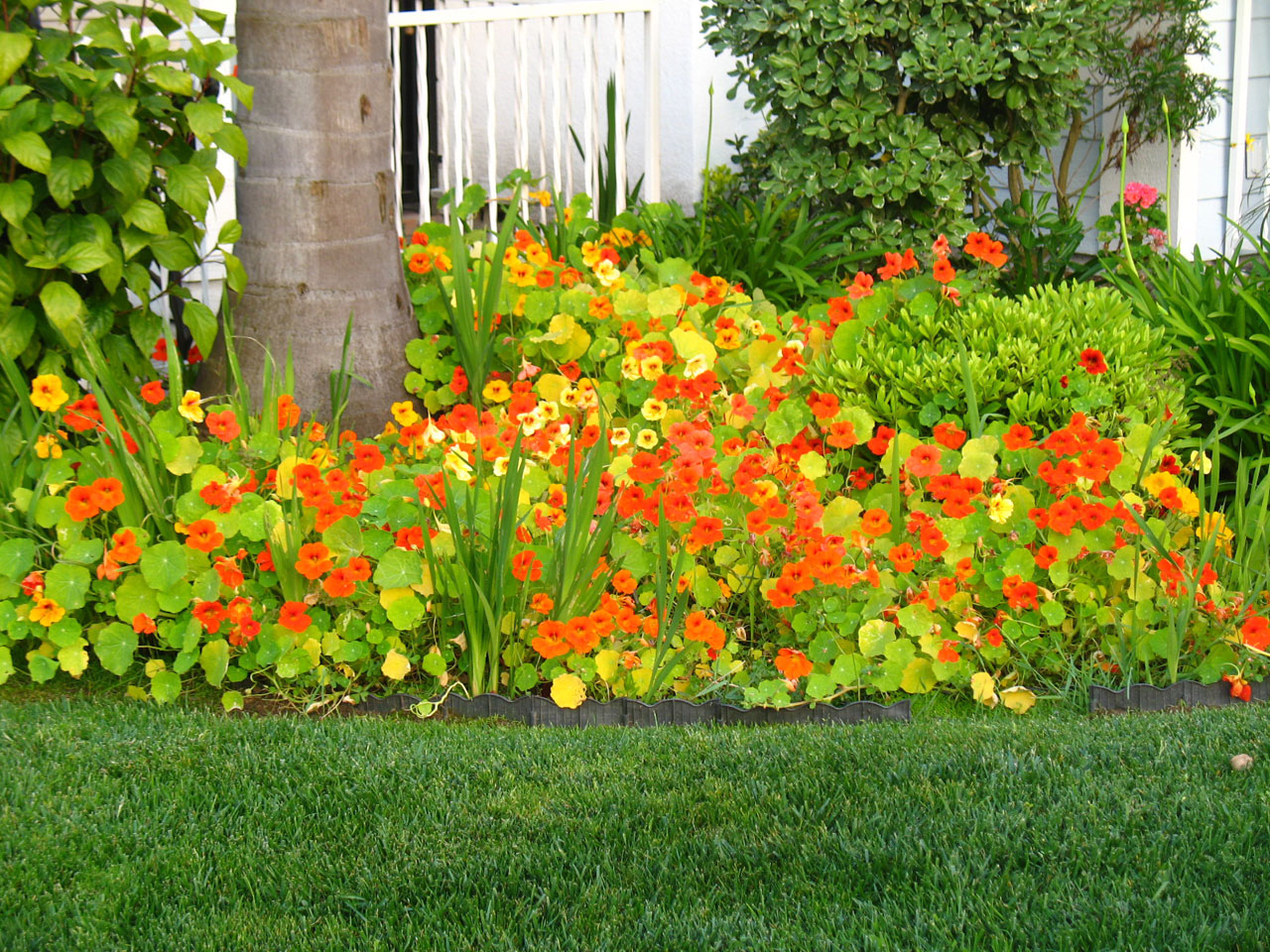
Nasturtium in the garden
Nasturtium is a flower that begins to bloom in early summer. A large number of plant varieties stand out. But nasturtium curly has common characteristics that distinguish the culture from other varieties.
What family does it belong to
Nasturtium flowers belong to the Capuchin family (Nasturtium). It can be a perennial and annual species depending on the variety. There are more than 80 plant varieties.
Briefly about the history of appearance
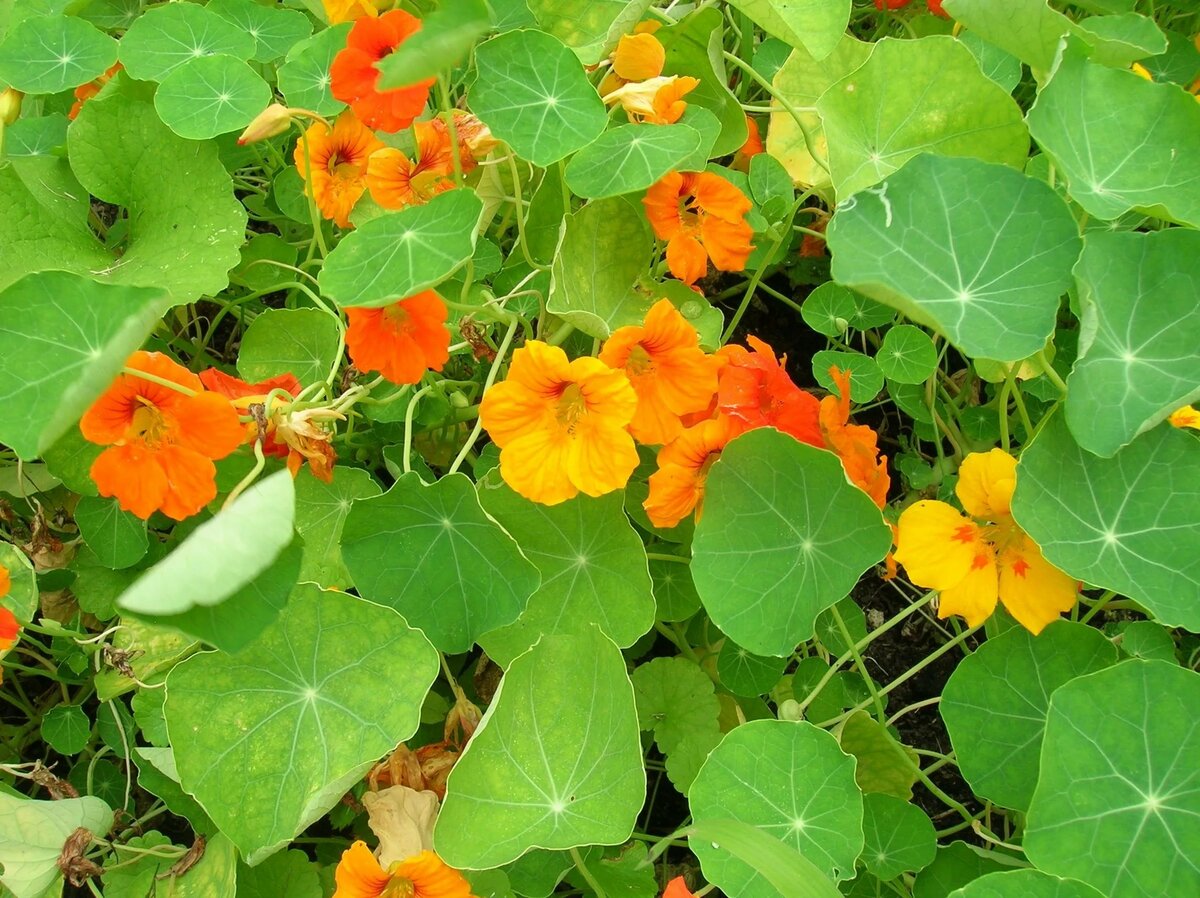
Bright flowers look great in any flower bed
The plant was first seen in South America. Later, varieties of culture spread in Central America. Gradually, the unusual flower was distributed in various countries, where it had the name capuchin.
Plant characteristics
Has the following characteristics:
- liana forms lateral shoots, which leads to braiding of large areas;
- suitable for landscaping gazebos, balconies and fences;
- the roots are located in the upper layer of the soil;
- large buds, yellow or orange;
- leaves are cordate, or round, small in size.
Vines can be up to 4 meters long with proper care. The culture can be grown using seeds or seedlings.
Useful properties of nasturtium
Nasturtium in a flower bed can act not only as a decoration. The plant has many beneficial properties.
The most famous are:
- bactericidal properties;
- vasodilation;
- anti-inflammatory properties (can be used to remove purulent formations);
- for the treatment of cough;
- treatment of the skin from fungal diseases;
- restoration of the work of the heart muscle;
- relief of menopause symptoms in women.
The plant also gained great popularity in cosmetology. With the help of the plant extract, you can rejuvenate the skin and improve the condition of the hair.
Classification of popular types of nasturtium
Varieties of nasturtium have distinctive features and are often used to create unique landscape compositions.
- Foreign nasturtium, or Canary
A distinctive feature of the culture is the length of the liana, which can reach up to 4 meters. Liana is fleshy with a lot of side shoots.
Climbing nasturtium is used to decorate gazebos and slides. The leaves are bright green. A feature of the plant are small yellow buds.
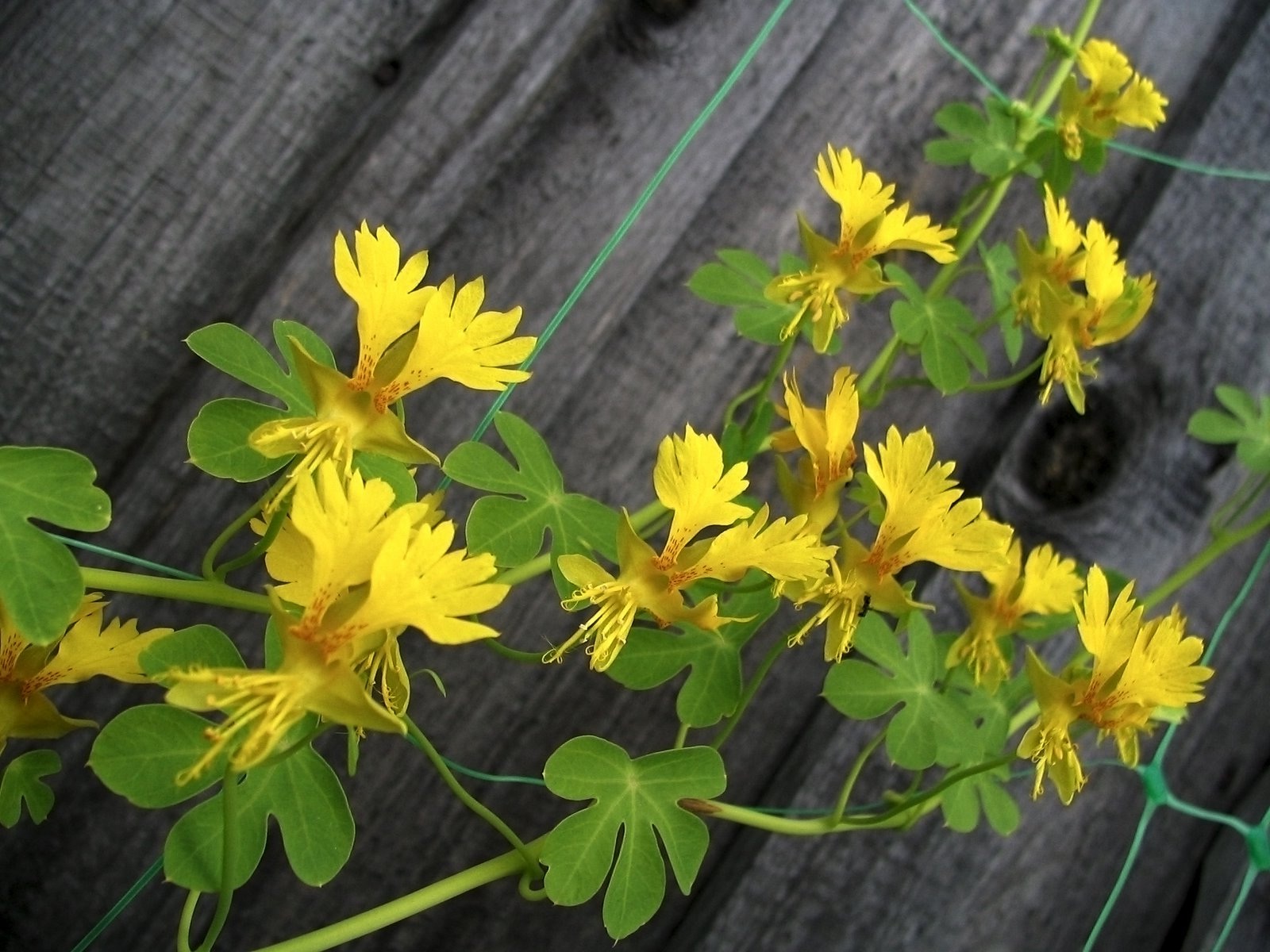
Foreign nasturtium
- Large nasturtium
Large nasturtium is large in size. Forms a bush that can reach heights of up to 1 meter.
Shoots are fleshy, but weak. The leaves are large green. Large buds can be double or regular.
- Cultural nasturtium
Hybrid plant, bushes can grow up to 50 cm in height. The leaves are round, large. Varieties of this variety can be compact in size or used for landscaping gazebos. Shoots are strong, densely decorated with leaves.
- Small nasturtium
Small nasturtium is a small plant that is often found in gardens. The bush can grow up to 30 cm in height.
The leaves are small, heart-shaped. Small yellow buds with small dark spots. The flowering period is from early summer to the first frost.
- Shield-bearing nasturtium
A shrub that has long shoots (up to 4 meters). The leaves are densely packed and have a dark green color. The buds are small, red.
Under natural conditions, nasturtium is a perennial plant. However, in many regions of Russia it does not withstand frosts. Therefore, the plant is planted regularly in the spring by using seeds or seedlings.
The cultivars that are most popular with horticulturists
Among the wide variety of plant varieties, it is necessary to highlight the most popular among gardeners.
- Alaska
Nasturtium Alaska has a wide variety of bud colors. The height of the bush can reach up to 40 cm. Shoots are well developed with a large number of lateral branches.

Variety Alaska
- Maiden Beauty
Nasturtium Maiden Beauty is distinguished by a variety of colors. Small buds, located on small side shoots.
- Canary
An annual climbing plant, the length of the vines can reach up to 3 meters. Small inflorescences are located on lateral shoots.
It blooms in bright yellow throughout the summer.
- Vesuvius
The plant grows to a height of no more than 26 cm. The stems are strong, erect, with a large number of lateral branches. Orange buds with burgundy splashes.
- Cherry rose
The height of the plant is no more than 50 cm. The bush grows compactly. The flowers are large cherry-colored. Most often used to decorate balconies and window boxes.

Cherry Rose Variety
- Black truffle
Low-growing culture, the height of which is no more than 30 cm. Carved green leaves. The inflorescences are dark cherry in color and bloom until the end of October.
- Mahogany
The plant is small with erect shoots. The leaves are rounded dark green. Terry buds are bright red.
- Mayskaya
An annual plant. Most often, travel along the ground. The stem can be up to 1 meter long. The buds are orange in color with bright red stripes.

May nasturtium
- Silk road
The climbing plant has a thick stem, from which lateral processes extend in large numbers. Inflorescences of different colors are located on high peduncles.
- Cherry rose
The unusual coloring of the plant makes it popular among gardeners. The height of the bushes is up to 30 cm. The buds are colored deep red.
- Black Lady (Black Velvet)
The plant is distinguished by burgundy buds with yellow spots. The bush can reach a height of over 40 cm.
- Moonlight
The culture grows in the form of lianas, reaching a length of up to 3 meters. Small buds are light yellow in color.
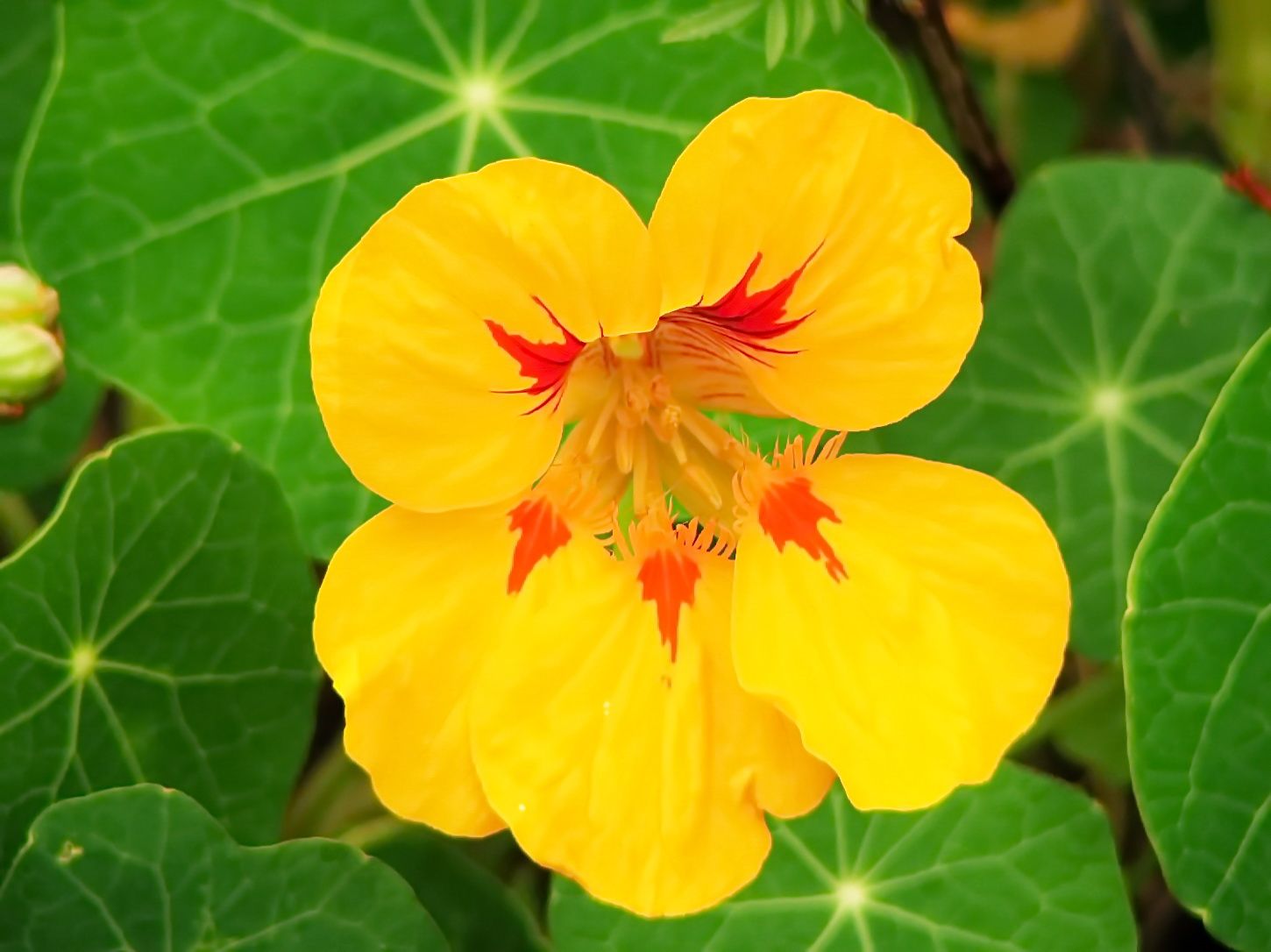
Moonlight variety
- Golden Globe
The bush is shaped like a ball. Often used to create compositions.
The height of the bush can reach up to 40 cm. The leaves are large, thyroid. The buds are large, terry, colored golden.
- Gleming Mahagani
The bush is stable, the height can reach up to 40 cm. The inflorescences are densely located on the shoots.Terry bud, red.
- ladybug
A compact plant, the height of which can reach up to 25 cm. The leaves are small, the branches are underdeveloped. A feature of the buds is a delicate apricot color with dark spots.
- Salmon Baby
Liana can be up to 2 meters long. Often used to decorate gazebos. Blooms in early summer, keeps buds until the first frost. The flowers are salmon colored.
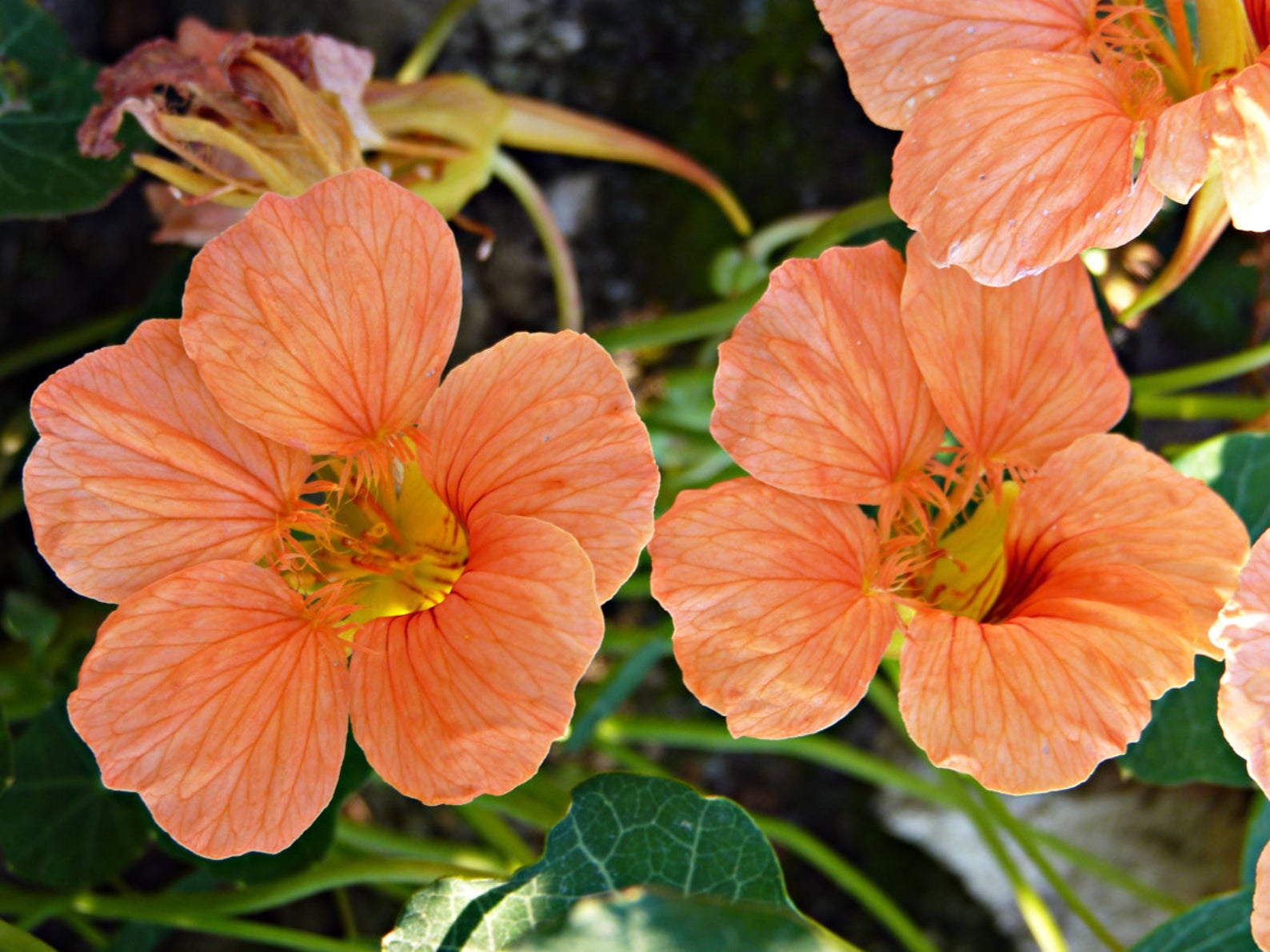
Salmon Baby variety
- Peach Melba
The nasturtium is undersized. The height of the bushes can reach up to 30 cm. The shoots are weak, spread along the ground. The leaves are rounded in rich green color. The buds can be yellow and orange.
- King Theodore
The height of the bush reaches 40 cm. The leaves are small, green. A distinctive feature is the red double buds.
Planting in pots, flowerpots and pots

Pot-grown nasturtium
Nasturtium planted in pots has an unusual appearance and allows you to create hanging compositions.
All types of crops can be used for cultivation. However, the most attractive are low-growing varieties that do not form long vines.
Planting a culture with seeds is carried out at the end of May. To grow seedlings, the seeds must be planted in pots one month before planting. Planting seedlings in open ground is carried out after the air warms up, and there is no risk of frost.
Nasturtium on the balcony is most often planted in box pots. With the help of a plant, you can create a bright flower bed on the balcony. For private homes, the ideal solution would be to plant seeds in flowerpots installed along the garden paths.
Features of care in the garden and on the balcony
For balconies, a terry mixture of nasturtium is most often used. Flowers have bright colors. Care in the garden and on the balcony is no different. In order for the plant to bloom profusely, the following points must be observed:
- It is necessary to water the bushes daily. It is recommended to spray the bushes with water from a spray bottle in the evening.
- Loosen the soil regularly, especially if the plant is grown on a windowsill.
- Remove weeds in a timely manner.
- Faded buds and dried branches are also recommended to be removed.
In order for nasturtium to bloom profusely in a pot, it is recommended to regularly apply nitrogen and potassium fertilizers. For these purposes, ready-made mixtures are used, which must be dissolved in water and the bushes must be fed once a week.

Growing on the balcony
When growing a plant in the garden, a problem often arises when the shoots spread along the ground. It is important to know how to tie up climbing nasturtium:
- Shrub supports are installed as soon as the first shoots appear. Pull the wire between the supports.
- After the emergence of young shoots, it is necessary to spread the vine, forming a beautiful fan.
- To strengthen the vine, you should not use a rope, since the side shoots are quickly intertwined with each other, forming a solid canvas.
Often, several plant varieties are used to form such vertical beds.
When and how it blooms
During the flowering period, the culture attracts everyone's attention. You need to know how nasturtium blooms, and what care rules must be followed during the period of bud formation.
Flowers consist of 5, rarely 6 petals. Flowers can be double, semi-double and simple. The size of the buds depends on the variety, and can range from 2 to 8 cm in width.
The shape of the flowers is irregular, looks like a hood. There is a small spur-shaped growth at the base of the flower. Initially, the name of the flower was capuchin, which corresponded to the description of the flower.
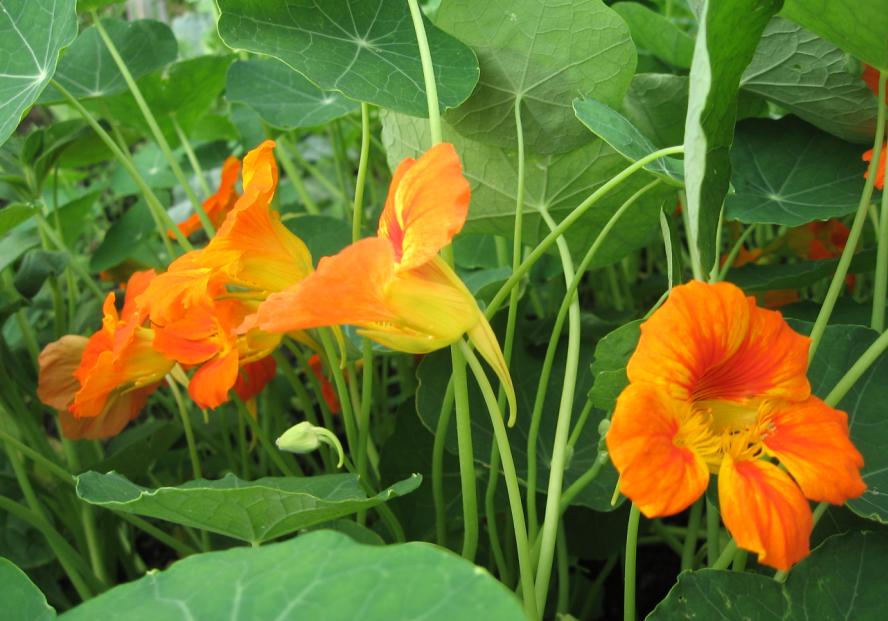
Flower shape
The period when nasturtium blooms is from mid-June to October. If the seeds are sown at the end of May, the flowering period is at the beginning of July.
To extend the flowering period, it is necessary to increase watering before the formation of buds. However, after the appearance of the first flowers, watering stops, and should be carried out no more than 1 time per week.
The liquid is applied by the root method so that no water droplets fall on the buds. It is also necessary to stop feeding.
Possible growing problems
With improper care, many gardeners have the question of why the plant does not bloom. These symptoms can appear for several reasons.
Pests
Due to its bright aroma, the plant is often used in the country to repel pests. However, in rare cases, parasites such as caterpillars can appear on the nasturtium itself. To combat them, it is necessary to pollinate the bushes with wood ash.
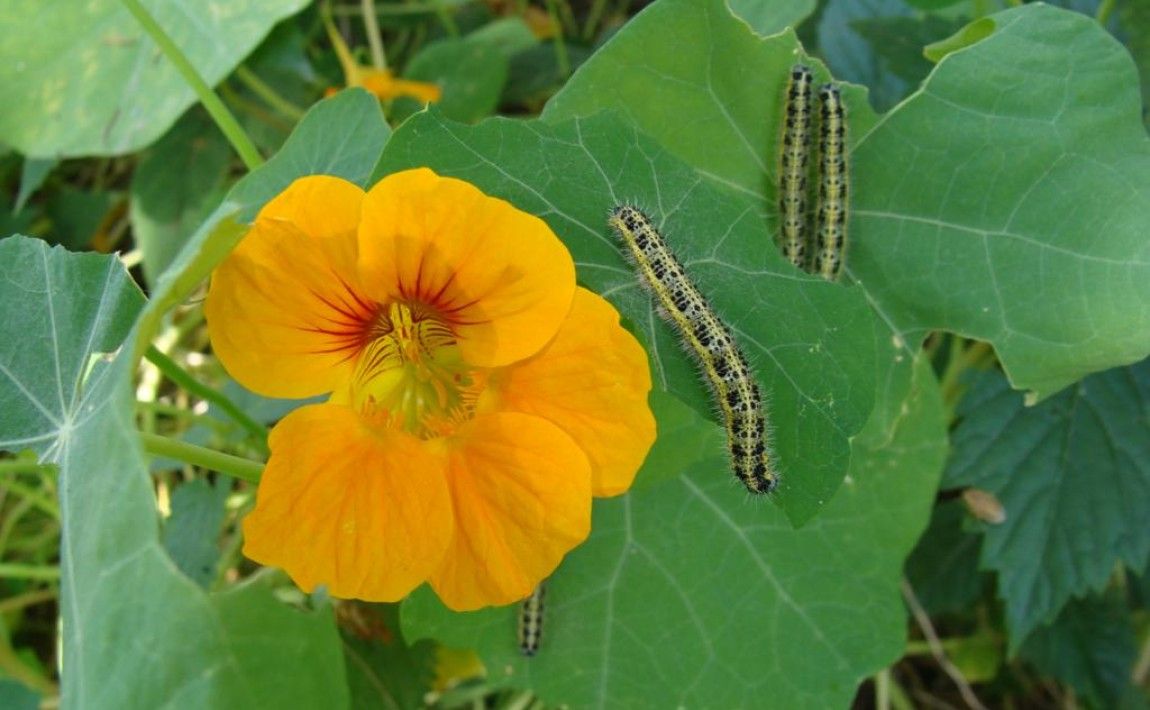
Pests of nasturtium
Diseases
Nasturtium has a high immunity to diseases. However, in some cases, the following problems may occur:
- bacterial wilting;
- spotting;
- gray rot.
When the first signs of the disease appear, the affected area is carefully cut off.
Signs of improper care
With improper care, the plant may not form inflorescences. The reasons may include the following factors:
- Using large amounts of water for irrigation. It is necessary to water the plant in small quantities so that the soil is moistened superficially. The accumulation of water leads to the appearance of rot in the root system.
- The use of fertilizers in large quantities. This is especially true for nitrogen-containing substances. Nitrogen provokes the appearance of a green mass, but inflorescences will not form. Therefore, it is recommended to alternate different substances during feeding.
- Planting plants in the shade. Nasturtium prefers sunny places, therefore it is not recommended to plant near buildings and in the shade of trees.
Care and cultivation of crops in the open field does not cause difficulties, subject to the recommendations of experienced gardeners.
Use in landscape design
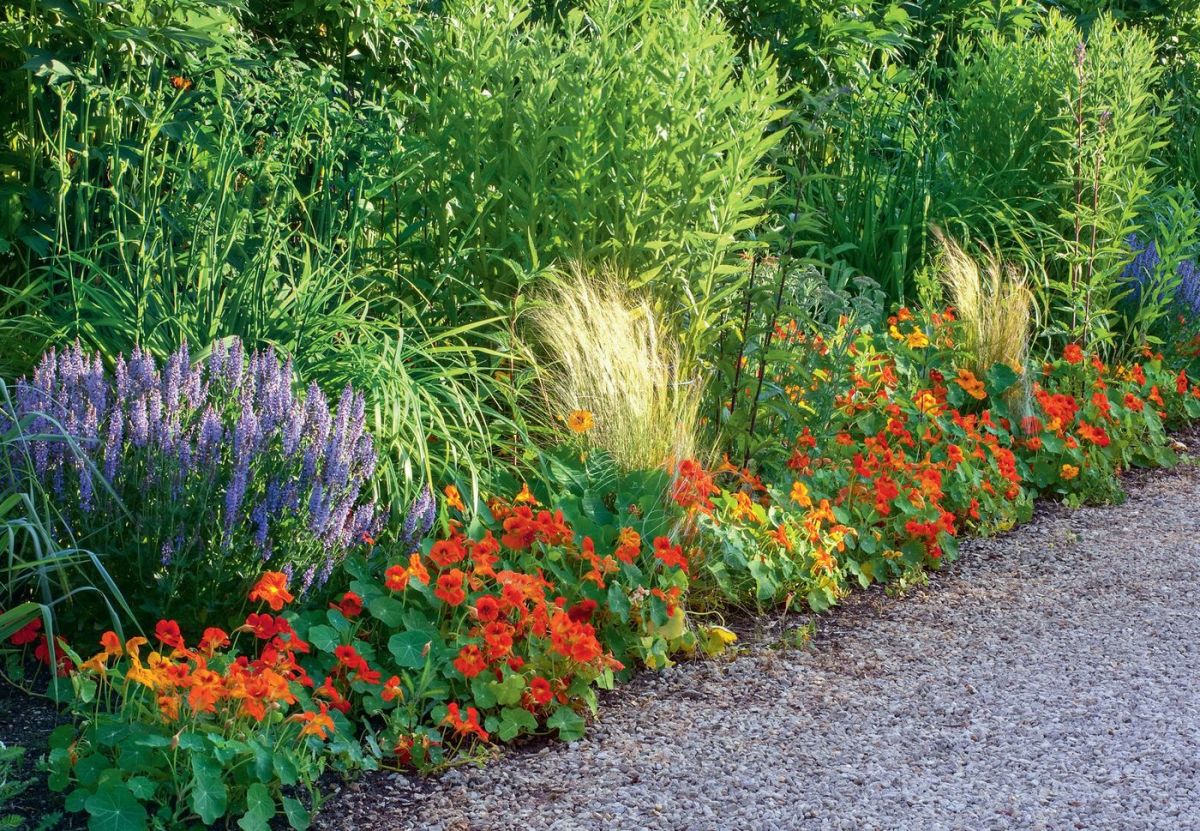
The use of nasturtium in landscape design
Nasturtium is used to decorate garden plots. It can be planted as an independent plant, and as landscape compositions.
Often nasturtium is used to decorate gazebos and air beds. The composition of different varieties of nasturtium against a background of greenery also looks attractive.
Nasturtium is classified into a large number of varieties and subspecies. It can be grown not only in the garden, but also on the balcony. The culture pleases with lush flowering throughout the summer. Also, the plant has a large number of beneficial properties and can even be eaten fresh.
